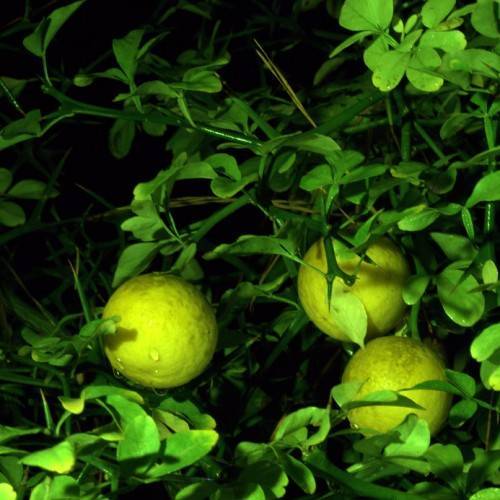
hardy orange
Poncirus trifoliata
Cycle:
Perennial
Watering:
Average
Hardiness Zone:
5 - 9
Flowers:
Flowers
Sun:
Full sun
Fruits:
Fruits Ready In
Edible:
Yes
Leaf:
Yes
Growth Rate:
Low
Maintenance:
High
Drought Tolerant:
Yes
Salt Tolerant:
Yes
Care Level:
Medium
watering
Watering a hardy orange plant (Poncirus trifoliata) is essential for its proper growth and development. To keep the soil moist, water the plant deeply once a week during periods of active growth. During this time, once a week with around 1 to 2 inches of water should be enough. Watering too often will lead to root rot which may damage the roots or even kill the plant. During periods of no active growth, such as winter, water the plant less often. During this time, water the plant approximately once a month, or whenever the soil feels dry. Be sure to water the plant consistently, as dramatic changes in water amount can affect the stability of the plant.
sunlight
Hardy orange plants, also known as Poncirus trifoliata, require plenty of sunlight for optimal growth. In general, these plants should receive at least 6 to 8 hours of sunlight per day. During the spring and summer months, when days are longer, the plant should be able to withstand more direct sunlight without issue. During the winter months, when daylight hours are shorter, it is best to filter or supplement the sunlight so as not to scorch or damage the plant's leaves. Additionally, if the plant is exposed to strong winds, it is important to provide partial shade to prevent sunscalding. In order to prevent sunburn, Hardy orange plants should be grown in a location that is fully exposed to the sun during the morning hours, but that receives only partial afternoon sun.
pruning
For Hardy Orange (Poncirus Trifoliata) pruning, some light maintenance pruning can be done throughout the growing season. Generally, early spring is the ideal time to tackle the bigger projects and do more extensive pruning. Start by removing any dead, diseased, or broken branches, then thin lightly by cutting back competing branches that are too close together or otherwise creating an undesirable shape. Also, as the shrub is heavy bearing, you should trim back branches that are encroaching on windows, walkways, and other areas. Finally, for an overall pleasing shape you can prune away any lanky branches or branches that are growing in an awkward direction. This is best done during the late winter or early spring before the plant begins breaking dormancy.
